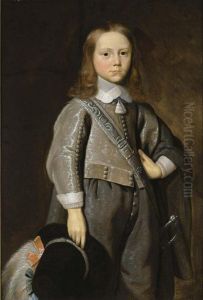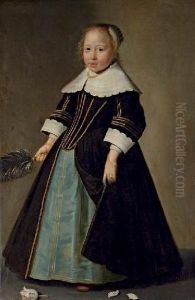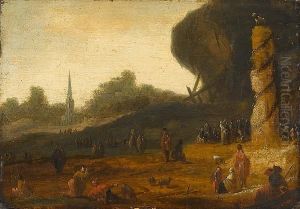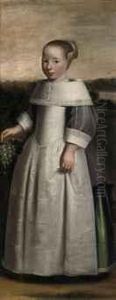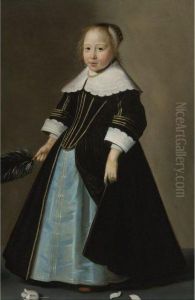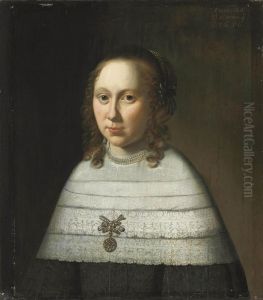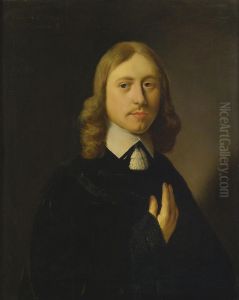Jan Jansz De Stomme Paintings
Jan Jansz de Stomme, also known as Jan Jansz. van Stom, was a Dutch Golden Age painter, born around 1615 in the Northern Netherlands. Although not much is known about his early life and training, his work reflects the profound influence of the prevailing Baroque style and the local tradition of portrait painting that was prominent in the Netherlands during the 17th century.
De Stomme's career is primarily noted for his detailed and characterful portraits. His subjects ranged from the bourgeoisie to the nobility, capturing them with a sense of individuality and often including rich details of their attire and surroundings that reflect their social status and personal wealth. He was particularly adept in the use of chiaroscuro, the technique of using strong contrasts between light and dark to give the illusion of depth and volume in painting, which was a hallmark of Baroque art.
Despite his nickname 'de Stomme,' which translates to 'the mute,' there is no definitive historical evidence to confirm whether he was indeed unable to speak. This moniker may have been an attribute to distinguish him from other artists with similar names or could possibly be a reference to a physical condition.
Jan Jansz de Stomme's art was well-regarded in his time, and he was active in the city of Groningen and possibly also in Hamburg, Germany. His influence on local art was significant, contributing to the stylistic developments in portrait painting in the region.
De Stomme died in 1657 in Groningen. Unfortunately, his work was somewhat forgotten after his death, overshadowed by other masters of the Dutch Golden Age. Nevertheless, in the modern era, art historians have re-evaluated his contributions, and his portraits are now appreciated for their craftsmanship and their place in the rich tapestry of 17th-century Dutch painting.
